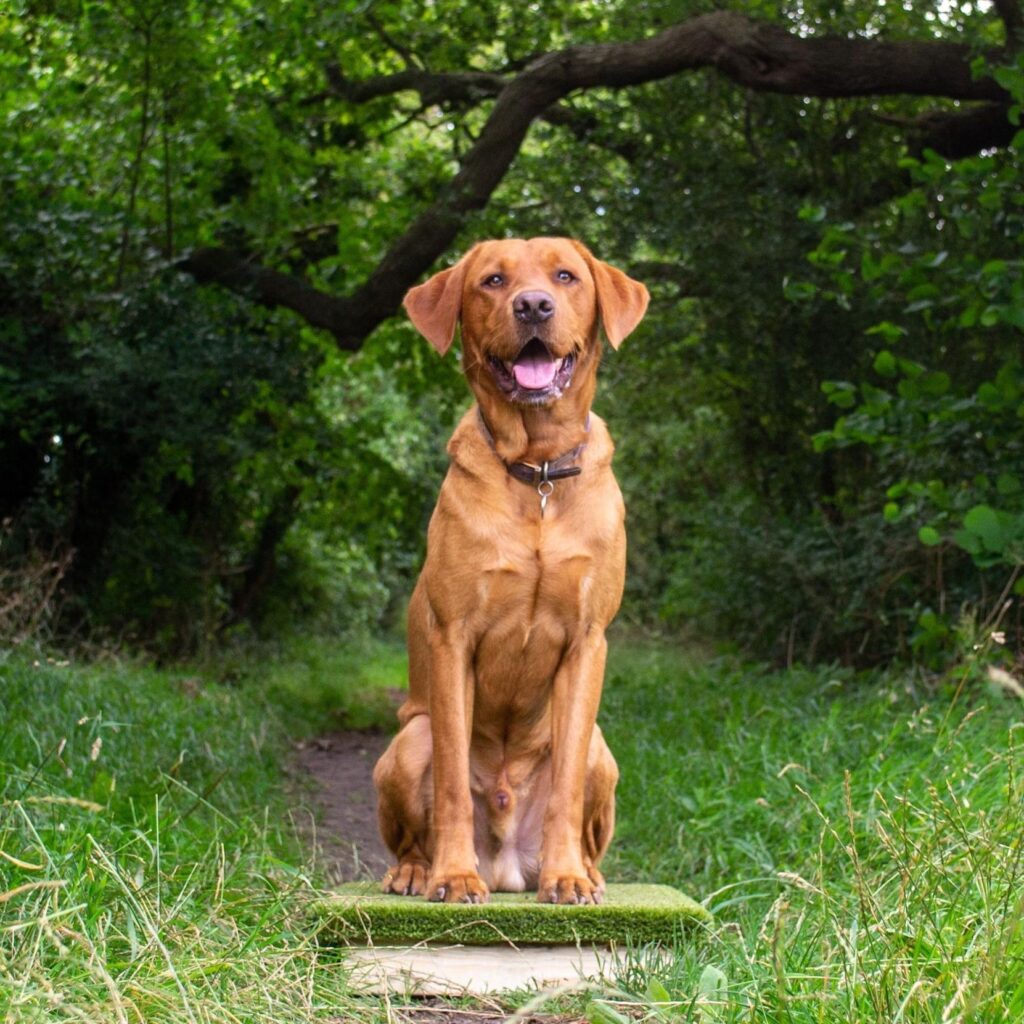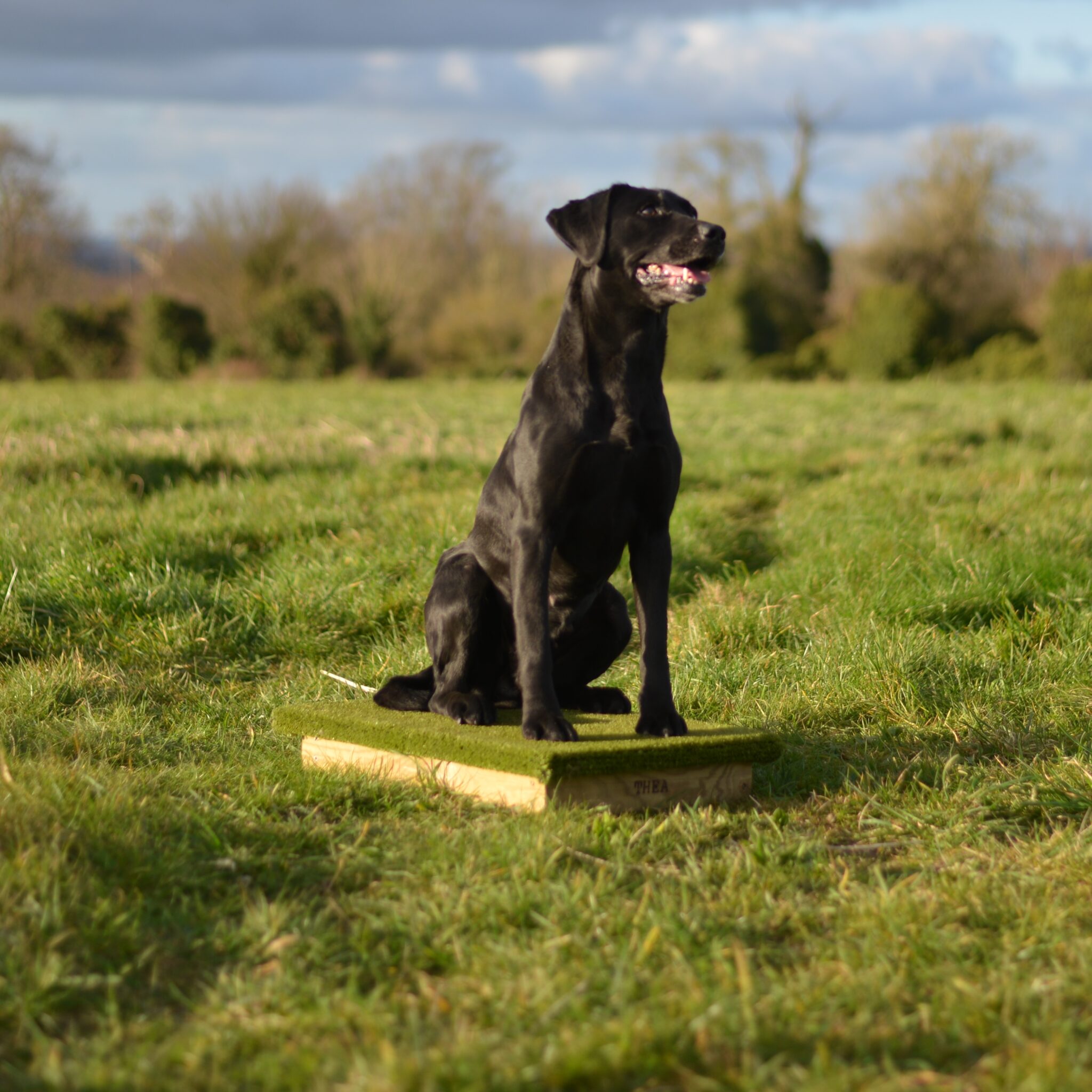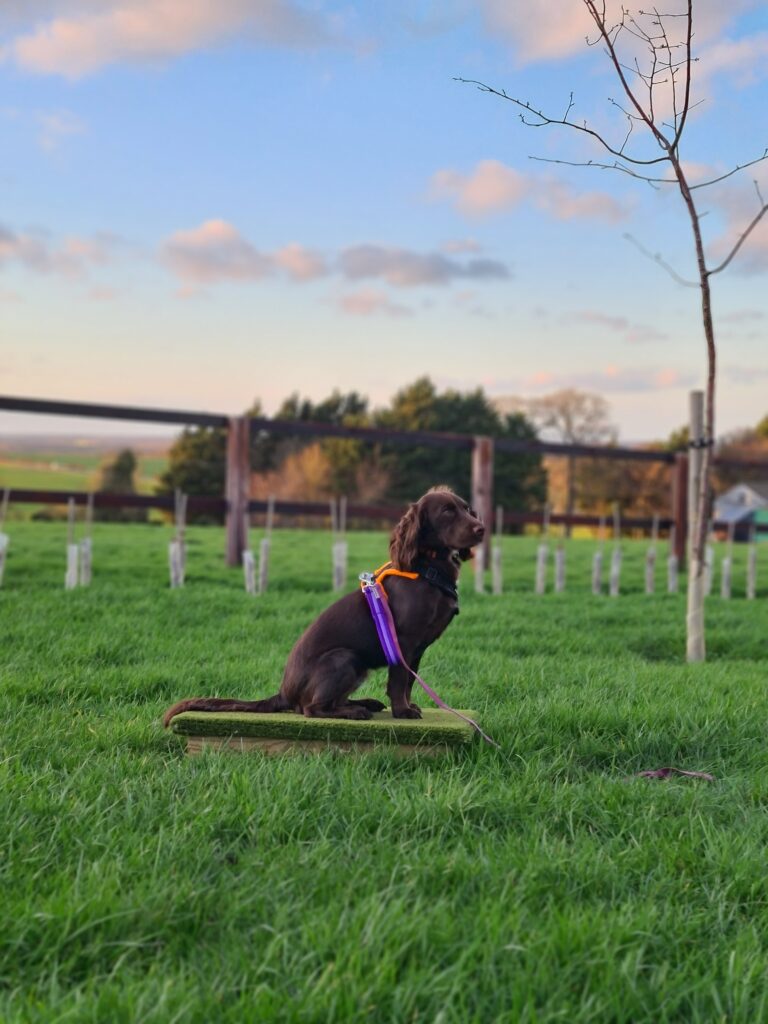Who We Are
Hi, I’m Emma, accredited as a professional dog trainer by the Institute of Modern Dog Trainers (IMDT) and co-owner of Anglian Dog Works.
We’re working dog owners and know what it can be like living with a smart and energetic dog! Without an appropriate channel, their boundless energy and unmet natural instincts can come out in all sorts of problematic ways: running, chasing, playing, hunting and lack of hearing when they’re busy doing something ‘important’ to name a few.
Our qualified, experienced, and knowledgeable team provide Dog Training and Equipment from our base near Cambridge in East Anglia. Our passion is providing stimulation and structure by sharing our tried and tested training methods and tools with fellow dog owners so that they can enjoy spending time with a happy and satisfied dog.
What We Do
At Anglian Dog Works, we use our knowledge and expertise to provide both professional dog training services & eco-friendly dog training equipment.
We offer general dog training and agility in our base’s areas on the three counties’ border of Cambridgeshire, Essex & Suffolk. This means we can help owners online and in-person from the locality and beyond.
We have also picked a selection of dog training supplies including natural treats and environmentally conscious canine products. These are all carefully chosen to complement your training. All these products are available in our store
I have teamed up with The Country Girls UK to share some insights into how to supercharge your training with our best-selling ‘Place Boards’.
Have you ever wondered how to communicate what you want to your dog?
You know you want to train an exercise, but you just can’t find a way to tell your dog what it is you want them to do in order for them to succeed?
For example, you want to practice sit-stay, so you ask your dog to sit but as soon as you take a step away, they creep forward to follow you? No! this isn’t what you wanted at all! But how on earth can you tell your dog that doesn’t speak your language, what you want?!
Focus your training using a target
This is where The Place Board comes in! Place Board training is a form of target training. Target training is used throughout many disciplines where complex interactions between animals and humans are required.
Using a Place Board as a target training mat in your practice cuts out any confusion by allowing us to break down behaviours such as ‘sit’ and ‘stay’ in dog obedience as well as more complex exercises found in gundog and agility work, into smaller steps making it easier to communicate what we want to our dogs.
Breaking behaviours down into steps allows dogs to rehearse doing the right behaviour, meaning it becomes reinforced. As your training progresses by adding new challenges or not using the board, the dog remembers the successful repetitions in your foundational training meaning that they’re more likely to succeed when called upon to perform that particular behaviour in future.

How they work
- As the platforms are raised and have a textured top, they feel a very different place for the dog to be than the surrounding area during training. In our foundation training you can teach your dog this is a positive place that they want to hang out on; you can then use the board in your training as a way to clearly communicate to the dog the desired behaviour.
- This type of target training has been made popular in dog training by professionals such as by field trial champion Ian Openshaw when he demonstrated the merit of using boards as gundog training equipment in place board training for spaniels at the CLA Game Fair.
- The boards can teach the dog where they need to be in relation to the handler. For example: To teach a dog that recall means come right back to the handler and avoid a dog that returns but dances just out of reach, you can put a place board by your feet paired with calling your dog back to you. Now they are running back to a target right in front of you.
- The texture of the mat on top provides a tactile contrast to the surrounding surface so there will be a perceptible difference to the dog having all four paws in the right place versus offering the wrong position. For example: when practising sit & stay you can teach the dog that when they place all four paws on the boards is when they earn a reward, whereas if they step off or creep forward, they will not earn a treat so the dog will be less likely to offer incorrect behaviour in the future.
Finally see rock-solid steadiness, reliable recalls and retrieving to hand
Adding a training platform to your tool kit you’ll see a dog that is excited, motivated, and eager to learn increasingly complex drills. Truly a gamechanger; making it easy to own a well-trained working dog.
How to teach gundogs to cast left, right, and back using Place Boards.
Firstly, what is gundog casting?
Casting is a term used to describe how you can handle your dog at distance. Casting allows you to control your dog’s movements at distance and choose the direction in which they travel next for instance left, right and backwards when picking up game birds.
Gundog skills: directional control
In Gundog Training you can teach your dog that:
- When you say “Back” as you raise a hand at shoulder height and move that hand forward away from your body, that’s a cue for your dog to ‘turn 180 ° and run directly back in a straight line until they find their target’
- When you point besides you with a straight arm raised at shoulder height, that’s a cue for your dog that ‘turn 90° and run out in a straight line until they find their target’
The target is typically a retrieve but can be a marker post or food bowl, and in these practice exercises, it will be a Place Board.
Repeatedly pairing your arm gestures with sending your dog to a Place Board target in different positions around you will teach them how to cast in different directions.
What is the benefit of having directional control of your gundog?
Having the ability to direct dogs to run out on different paths allows gundog handlers to guide dogs left, right and backwards onto the retrieve the handlers want them to take.
For example, left onto a ‘runner’ instead of a right onto a dead bird which will be there when the dog gets back!
Why use a Place Board to help your gundog training?
In Gundog Training, even with the keenest dog, you would limit the number of retrieves you send a young pup out for in each session; after all, as the saying goes, “familiarity breeds contempt”!
The benefit of using a Place Board to practice is you can get lots of successful repetitions in your session without the dog losing motivation to retrieve.
Pairing the new arm gesture with the target provided by a Place Board aids your dogs in understanding the new arm cues which will be used in gundog work to redirect your dog when working to find a retrieve.
I deliberately use the word ‘cue’ instead of the old school term ‘command’ because you’re prompting your dog to choose to do something in return for a reward, rather than forcing them.
Taking a modern, science-based approach to dog training is not only effective but also consistent with the IMDTs Code of Ethics and my own principles of kindness, fairness, and good welfare to increase motivation.


Place Board training:
Prerequisite: to try out these casting exercises, your dog will need to have been introduced to place boards already. See here for more information on this here: https://angliandogworks.com/products/placeboardcourse
You will need:
- Dog Training Platform such as a Place Board
(Q: Do you have to use a place board to teach ‘place’?
Check out answers to this and other FAQs here: https://angliandogworks.com/blogs/place-board-training/your-place-board-questions-answered)
- High-value food rewards cut into pea-sized pieces.
- Treats Pouch.
- A picture containing grass, outdoor, green
Figure 1 What you will need for Place Board Training
TIP: high-value food rewards include chicken/sausage/cheese/pate. It is advantageous if the food is light coloured, like cheese, so when the reward is placed on the ground it is easy for your dog to spot.
Exercise 1: Left and right
- Setup a board, 5 paces away from your side (left or right).
- Count out two high-value rewards ready in your hand.
- Have your dog sit in front of you.
- Say “Place” as you step to the side and point to the Place Board beside you with a straight arm raised at shoulder height.
- Say “good” the moment your dog sits to ‘mark’ the precise behaviour that has earned them a reward.
(If your dog doesn’t go to the board and sit, re-visit the foundation steps of introducing a Place Board to your training, such as ‘Travel’ from ADW’s T.A.R.G.E.T Guide a little longer.)
- Go to your dog and reward them in their seated position on the board: give 1 treat to their mouth with lots of verbal praise. After, throw the 2nd treat off the board onto the floor, paired with saying your release cue “OK” to indicate to your dog the behaviour is complete, and they can get out of a sit and off the board.
- After 3-5 repetitions of steps 1-6 above, let your dog have a break to sniff and mooch about, before repeating steps 1-7 until your dog is eagerly going onto the Place Board and sitting without hesitation.
- Practice sending your dog left and right an equal amount of times
- To progress, with your dog in front of you, don’t say “Place” and only use your arm gesture. If they travel to the board, they have learnt the cue, if not, practice the steps above a little longer.
- When the behaviour is established, substitute a dummy for the Place Board, and place that at 90 degrees to your dogs’ position instead and cast them out to retrieve it.
TIP: practice against a hedge or wall to limit options and encourage a straight run out.
Want a challenge?
Put the Place Board further away from you and your dog.
With each success, stand a few paces further from the Place Board back to handle your dog with a greater distance between you.
Exercise 2: Go Back
- Set up a board up to 5 paces behind where your dog will sit.
- Count out two high-value rewards ready in your hand.
- Have your dog sit directly in front of you.
- Say “Place” and push your hand away from your body, at shoulder height, towards the Place Board behind you.
TIP: This hand gesture must be visually distinct from the overhead flat hand that is traditionally use to stop gundogs, which looks like a policeman style stop.
- Say “good” the moment your dog sits to ‘mark’ the precise behaviour that has earned them a reward.
(If your dog doesn’t go to the board and sit, re-visit the foundation steps of introducing a Place Board to your training, such as ‘Travel’ from ADW’s T.A.R.G.E.T Guide a little longer.)
- Go to your dog and reward them in their seated position on the board: give 1 treat, into your dogs’ mouth, throw the 2nd treat off the board onto the floor, and say “OK”.
- After 3-5 repetitions of steps 1-6 above, let your dog have a break, before repeating steps 1-7 until your dog is eagerly going onto the Place Board and sitting without hesitation.
- To progress, with your dog in front of you, don’t say “Place” instead, only use your arm gesture as the ‘cue’. If they travel to the board, they have learnt the cue, if not, continue to practice the steps above a little longer.
- Next, as you push your raised hand towards the Place Board behind you say “back” at the same time to teach them what the verbal cue means through associative learning.
- When the behaviour is established, substitute a dummy for the Place Board, and place that behind your dog instead. Gesture plus say “back” to cast them behind to retrieve it.
Want a challenge?
- Raise different hands to gesture back using different shoulders.
- Put the Place Board further away from your dog so that you are sending them a further distance.
- With each success, stand a few paces further back to handle your dog with a greater distance between you.

Disclaimer: The content of this article does not include personalised advice and is for information purposes only. If you need individual advice or other enquiries please click here to get in contact or if you’re not local to Anglian Dog Works, you can find a trainer in your area by going to the IMDT website: https://www.imdt.uk.com/find-a-qualified-imdt-trainer
By Emma from Anglian Dog Works
